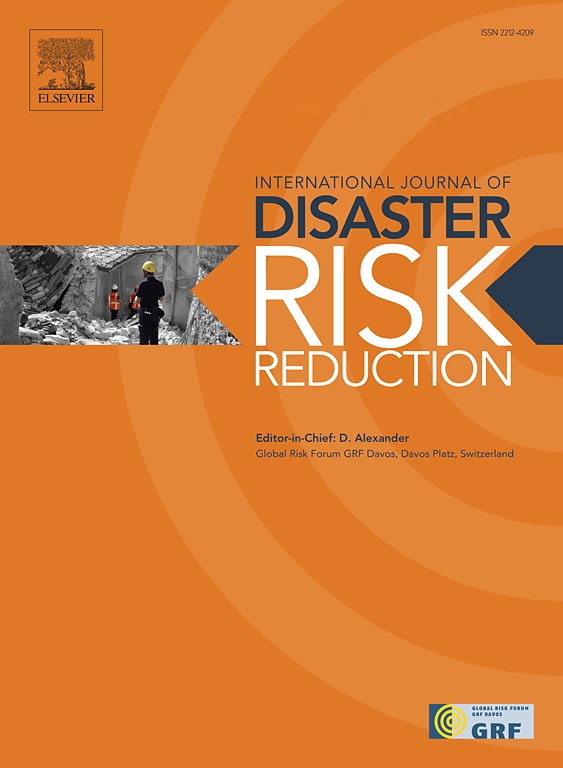The relationship between sociotechnical vulnerability and coastal erosion in rural Alaska
IF 4.2
1区 地球科学
Q1 GEOSCIENCES, MULTIDISCIPLINARY
International journal of disaster risk reduction
Pub Date : 2025-04-09
DOI:10.1016/j.ijdrr.2025.105466
引用次数: 0
Abstract
Arctic Alaska is warming quickly, resulting in the disruption of water-ice patterns, permafrost destabilization, and severe weather. As such, coastlines erode at increasing rates, compromising vulnerable communities’ infrastructure systems. However, despite the intersection of vulnerability and erosion, disaster literature typically focuses on this intersection in acute, rather than chronic (i.e., erosion), disaster contexts. Here, a natural disaster is defined as a severe disruption of the functioning of a community due to hazards interacting with exposure, vulnerability, and capacity, leading to significant losses and impacts (human, economic, etc.). As a result, the correlation between vulnerability and erosion in rural Alaska is largely unknown, limiting the effectiveness of disaster planning. This study identifies the sociotechnical components of vulnerability most strongly correlated with the presence of erosion. Equipped with LANDSAT imagery and a machine learning approach, we quantify erosion in 44 coastal Alaska communities from 2005 to 2020. We employ Kendall Tau-b correlation to quantify the correlation between coastal erosion and sociotechnical data from the 2020 American Community Survey. Results demonstrate that erosion here is correlated with: (1) percent of the population that is Alaska Native, (2) the percent of the population that is 65 and older, and (3) the percent of total housing units built between 1940 and 1949. Policy suggestions include incorporation local input and Indigenous knowledge into adaptation activity and disaster response, as well as dedicated resources to support the elderly population in chronic disaster scenarios.
求助全文
约1分钟内获得全文
求助全文
来源期刊

International journal of disaster risk reduction
GEOSCIENCES, MULTIDISCIPLINARYMETEOROLOGY-METEOROLOGY & ATMOSPHERIC SCIENCES
CiteScore
8.70
自引率
18.00%
发文量
688
审稿时长
79 days
期刊介绍:
The International Journal of Disaster Risk Reduction (IJDRR) is the journal for researchers, policymakers and practitioners across diverse disciplines: earth sciences and their implications; environmental sciences; engineering; urban studies; geography; and the social sciences. IJDRR publishes fundamental and applied research, critical reviews, policy papers and case studies with a particular focus on multi-disciplinary research that aims to reduce the impact of natural, technological, social and intentional disasters. IJDRR stimulates exchange of ideas and knowledge transfer on disaster research, mitigation, adaptation, prevention and risk reduction at all geographical scales: local, national and international.
Key topics:-
-multifaceted disaster and cascading disasters
-the development of disaster risk reduction strategies and techniques
-discussion and development of effective warning and educational systems for risk management at all levels
-disasters associated with climate change
-vulnerability analysis and vulnerability trends
-emerging risks
-resilience against disasters.
The journal particularly encourages papers that approach risk from a multi-disciplinary perspective.
 求助内容:
求助内容: 应助结果提醒方式:
应助结果提醒方式:


